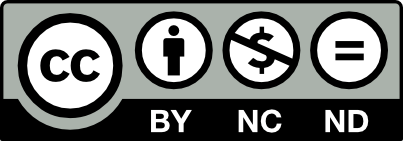This page is licensed under Creative Commons under Attribution 4.0 International. Anyone can share content from this page, with attribution and link to College MatchPoint requested.
Before Your Teen Applies: 3 Admissions Stats Parents Can’t Ignore
As parents, it’s easy to feel like college admissions is one big game of telephone. Advice gets passed from neighbor to neighbor, from older siblings to younger ones, and across every parent Facebook group. Some of it’s true. A lot of it isn’t.
You’ve probably heard the classics: applying in-state always gives your student an edge, the most expensive schools are out of reach, and merit aid is everywhere if your teen works hard enough. But the actual data tells a very different story. Three surprising admissions stats stand out—and each one flips a common myth upside down.

Stat #1: Out-of-State Students Sometimes Have the Advantage
Most parents assume in-state applicants always have the upper hand at public universities. In Texas, that’s true—UT Austin and Texas A&M clearly prioritize residents. But elsewhere, the pattern reverses. On the West Coast, for example, out-of-state students are admitted at rates about five percentage points higher than in-state.
Why? At schools like the University of Oregon and some California publics, out-of-state tuition dollars are vital to the budget. Admitting more nonresidents helps these universities stay financially strong. Even at private schools, outsiders can sometimes have an edge. Both New York University (NYU) and Boston University lean toward admitting more out-of-state applicants to build geographic diversity.
The takeaway: don’t assume geography always works in your favor. Families in Texas may see clear advantages at home, but those rules change the moment you cross state lines.
Stat #2: The Highest Sticker Prices Often Mean the Most Aid
Nothing rattles parents faster than seeing a college’s cost creep above $80,000. The gut reaction is to move on. But here’s the surprise: many of the most expensive colleges are also the most generous with financial aid.
Williams College, with a sticker price close to $90,000, meets 100 percent of demonstrated need. For families who qualify, the real bill is often far lower than expected. Rice University in Houston also follows this model, covering the full need for eligible students. Compare that to Bridgewater State University in Massachusetts: its price is lower, but it covers only about three-quarters of demonstrated need, leaving families to fill the gap.
Then there are schools that lean heavily on merit instead of need-based aid. Baylor University and Trinity University in Texas often award large merit scholarships that bring down costs, but how much depends on your student’s academic profile.
The lesson for parents: don’t cross a school off your list just because of sticker price. Sometimes the “expensive” school ends up being the most affordable once aid is factored in.
Stat #3: Early Decision and Merit Aid Rarely Coexist
Families often hope for a double win: apply Early Decision to boost admissions odds, then collect a merit scholarship to ease the cost. The reality is harsher. At schools that admit a large share of their freshman class through Early Decision, merit aid is almost nonexistent.
Williams, Amherst, and Rice all fall into this category. They use Early Decision as their enrollment lever and commit their aid dollars to need-based students only. On the other hand, schools that don’t rely on Early Decision—like Baylor University or University of Miami—often award merit scholarships broadly, sometimes cutting costs by tens of thousands.
A few schools, like Southern Methodist University (SMU), sit somewhere in the middle, offering both ED and merit. But families should be realistic: it’s rare to find a school where you get both a meaningful Early Decision advantage and a generous merit award.
College admissions myths are powerful because they feel logical. Of course in-state should help. Of course the cheapest school should cost less. Of course a strong student should get merit everywhere. But the numbers tell another story.
Out-of-state students sometimes have the edge. The highest sticker prices often come with the most generous aid. And Early Decision almost always means saying goodbye to merit.
As parents, you don’t need to know every statistic, but these three can change the way you guide your teen through this process. Challenge the myths, ask sharper questions, and keep an open mind. The families who understand these patterns will be better prepared—not just to get in, but to afford the schools where their students can thrive.


